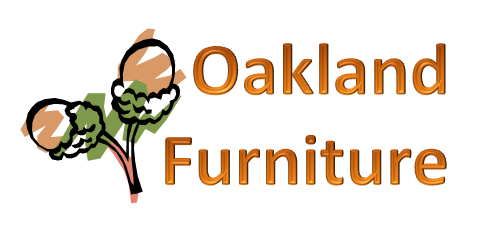Company Background
The company
Oakland Furniture Ltd. is located on a single site near High Wycombe, where many other furniture companies, some very small, are also based. Oakland is quite large in furniture industry terms and employs 300 people. There are 210 on the shopfloor, of whom 144 are skilled: 65 machine operators and 79 cabinet makers and finishers. The remaining 66 are semi-skilled or unskilled, and work on general handling jobs, packing and unpacking, etc. There are 90 staff: 20 production people including foremen and supervisors; 25 sales field staff; and about 40 clerical staff.. Most shop floor workers and some staff are members of the furniture industry trade union, the FTAT (Furniture, Timber and Allied Trades).
Oakland specializes in high quality "English" furniture, using oak, beech and yew solid timber stock and veneers. Their present product range is quite restricted. It was focused on the dining and occasional furniture (i.e., living room cabinets, coffee tables, etc.) sectors of the market. It had grown very rapidly some 25 years ago largely due to one particular dining room range, the "Oakland", which gave the company its name. This sold very well in high street retailers up and down the country. Oakland's now produce five coordinated ranges and a few specials - such things as one-off tables and matching sets of chairs for town halls, university council chambers and company boardrooms. Oakland's major competitors are firms such as Stag, Parker Knoll, Meredith and McIntosh.
The company had been bought over ten years ago at the peak of its earnings by a major conglomerate but had then rather languished, declining into making losses four years previously. This had opened the door for a management buy-out over two years ago, organized by the present Managing Director, Alex Rheingold, in close association with Rowan Gregory, the Chief Designer.
Technological change at Oakland
In the enthusiasm unleashed by the buyout, and the injection of cash made available, various opportunities for improving their operations had been implemented and others were being closely examined. Several numerically controlled machine tools had been bought second-hand. A major new machine, designed with expert contribution from Gregory and produced by a German Manufacturer, had been obtained on special terms. Various marketing initiatives had also been launched. These had certainly improved the situation, and the company was now breaking even, despite having to cover the heavy burden of interest on the loans used to finance the buy-out.
However, though fundamentally sound in market position, product range and quality, it was clear that the company desperately required improved means of stock control and production planning. It was in this general context that Alex Rheingold had been impressed by a presentation on the benefits of MRP by a consultant, Sandy Corbett, at a Furniture Industry conference. MRP is sold as a computer-aided system for materials handling and production scheduling. MRP 2 is the latest version of such systems which links production planning to other functional areas of the firm. As a result of the consultant's presentation, Alex suggested that Oakland should look into the pros and cons of introducing MRP.

